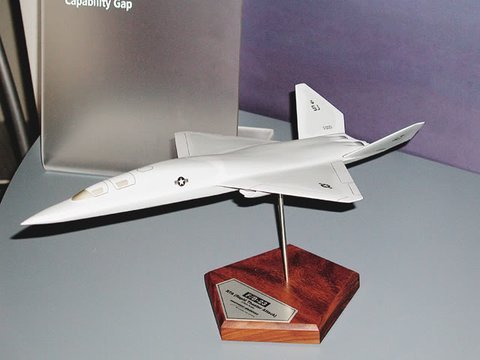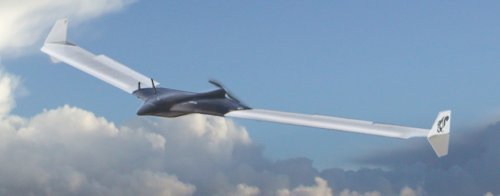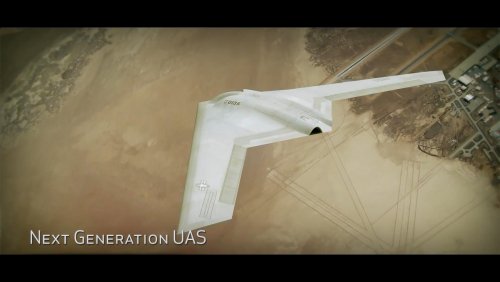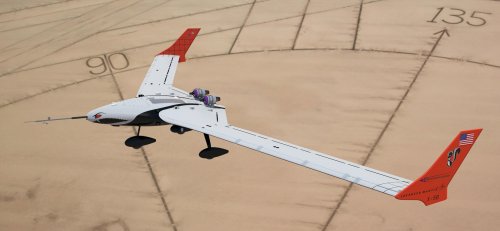bring_it_on
I really should change my personal text
- Joined
- 4 July 2013
- Messages
- 3,123
- Reaction score
- 2,235
Some old (2009-2011) but informative articles from Inside Defense and Defense Daily..
Pentagon: Long-Range Strike Study To Relook Power Projection Concept
Schwartz Scales Back Requirements For Next-Generation Bomber
Air Force Expects Streamlined Next Generation Bomber In Next Decade - DefenseDaily
Pentagon: Long-Range Strike Study To Relook Power Projection Concept
The Defense Department's ongoing long-range strike study will re-examine the "whole concept of power projection," according to a Pentagon official.
The study is in the early stages, but the goal is to produce insights by early fall, in time to influence the Office of the Secretary of Defense's review of the services' fiscal year 2012 program objective memorandum (POM-12) submissions, Deputy Assistant Secretary of Defense for Force Development David Ochmanek told Inside the Pentagon.
"We're looking at the portfolio of long-range strike capabilities," Ochmanek said, including "supporting elements of that, whether it's penetrating [intelligence, surveillance and reconnaissance]; survivable command and control communications; weapons and munitions; base infrastructure -- really the whole concept of power projection is being relooked at."
There are no early takeaways from the study yet, Ochmanek said in an April 21 interview.
"No, we're still at the point of refining the specific scenarios to be looked at, the target sets, the modalities of the analysis," he said. The analysis is mulling the appropriate mix of long-range strike capabilities, including heavy bombers and non-nuclear Prompt Global Strike. The Quadrennial Defense Review called for the study to determine the best mix of joint persistent surveillance, electronic warfare, and precision-attack capabilities -- including both penetrating platforms and stand-off weapons -- for U.S. power projection over the next 20 to 30 years.
"We have been examining the potential as well for some sort of nontraditional long-range strike assets," Ochmanek said. "You've heard about the Prompt Global Strike set of concepts. Where do they fit into an overall concept of operations? So that's been going on sort of in parallel with an analysis of more traditional things like bombers and cruise missiles."
To meet the potential threats to the American military's ability to project power, deter aggression, and come to the aid of allies and partners, the QDR directs more focus and investment in a new air-sea battle concept, long-range strike, space and cyberspace, among other conventional and strategic modernization programs.
The QDR notes the Air Force is eying ways to field survivable, long-range surveillance and strike aircraft as part of a plan to modernize the bomber force and working with the Navy on options for a new joint cruise missile.
The Navy, meanwhile, is mulling ways to expand the capacity of future Virginia-class attack submarines for long-range strike while also planning experiments with prototypes of a Naval Unmanned Combat Aerial System, a drone that might one day greatly boost the range of carrier-based ISR and strike operations. In a speech Monday at the Navy League's annual conference, Defense Secretary Robert Gates touted such efforts.
Gates called for extending the range at which U.S. naval forces can fight, refuel and strike with more resources devoted to long-range unmanned aircraft and intelligence, surveillance and reconnaissance capabilities; developing new sea-based missile defenses; giving the submarine force "expanded roles," including conducting more missions deep inside an enemy's battle network; increasing sub strike capability and using smaller and unmanned underwater platforms.
"Looking forward, we are focused on the challenge of anti-access adversaries and how we do power projection in a world where our adversaries have more capabilities to threaten our forces and bases in theaters of operation than has been the case in the past," Ochmanek said.
The QDR discusses that, makes some "down payments on capabilities" and moves in that direction, "but there is more to be done," Ochmanek added.
"We know other nations are working on asymmetric ways to thwart the reach and striking power of the U.S. battle fleet," Gates said Monday. "At the low end, Hezbollah, a nonstate actor, used anti-ship missiles against the Israeli navy in 2006. And Iran is combining ballistic and cruise missiles, anti-ship missiles, mines and swarming speedboats in order to challenge our naval power in that region."
At the higher end of the access-denial spectrum, he said, U.S. forces now face long-range, accurate anti-ship cruise and ballistic missiles with the capability to strike from over the horizon.
"This is a particular concern with aircraft carriers and other large, multibillion-dollar blue-water surface combatants, where, for example, a Ford-class carrier plus its full complement of the latest aircraft would represent potentially a $15 [billion] to $20 billion set of hardware at risk," Gates said.
Gates said the agreement by the Navy and the Air Force to collaborate on an air-sea battle concept is "an encouraging development, which has the potential to do for America's military deterrent power at the beginning of the 21st century what air-land battle did near the end of the 20th." Work on the concept is progressing, Ochmanek said.
"That's going on as well between the Air Force and the Navy and we're very hopeful that's going to come up with some new ways to skin this cat," he told ITP. "There's still in the study and analysis phase but we're kind of following that pretty closely."
Schwartz Scales Back Requirements For Next-Generation Bomber
The Air Force's top officer this week said the U.S. military's next-generation bomber will not be a "lone wolf" aircraft that operates without escort, noting that the requirements now being considered by the Defense Department for a new, long-range strike capability are less ambitious than previous Pentagon plans for a future bomber.
"I think that's clear," Air Force Chief of Staff Gen. Norton Schwartz said in reply to a question asking whether capabilities currently being envisioned for the new bomber are more "modest" than prior plans "At least at the start, this airplane will not be a lone wolf. It wouldn't have everything on it that you would need to operate independently of everything else in the portfolio."
In early March, Defense Department leaders began in earnest an effort to hammer out a plan to modernize its bomber force. Defense Secretary Robert Gates called for the study in December as a follow-up to an assessment of potential long-range strike capabilities conducted last year in support of the Quadrennial Defense Review.
The goal is to determine what combination of joint persistent surveillance, electronic warfare and precision-attack capabilities -- launched from either penetrating or stand-off aircraft -- will best suit U.S. operations for the next three decades.
The working group includes leaders from the Pentagon's policy shop, the office of cost assessment and program evaluation and the Joint Staff as well as other key stakeholders in a future bomber program -- among them representatives from the Air Force, the Navy, U.S. Strategic Command and U.S. Pacific Command. In addition, the working group is being supported by the RAND Corp., the Institute for Defense Analyses and Johns Hopkins University's Applied Physics Laboratory.
"People have different views about how big it should be, how far it should be able to go, what kind of weapon payload it might carry," Schwartz said March 30. "These are serious questions that generalists, like me, and analysts, like others, have to wrestle with. That's what lies in front of us."
Schwartz would only outline in broad terms the Air Force's position in the closed-door discussions.
"Clearly we believe -- the Air Force believes -- there is a need in the defense portfolio for something between an F-35 and a conventional ICBM," the Air Force four-star said. "The country needs something in that space. Now what we have to do is we need to persuade the leadership -- both uniformed and civilian in the building -- that what we have in mind is appropriate, affordable and that it has very little if any wishful thinking associated with it."
The Pentagon's five-year investment blueprint allocates $1.7 billion to fund work on capabilities expected to be incorporated in the future platform, whatever shape it takes, Schwartz said.
"The idea here is to have industry work on things that clearly have value to a long-range strike platform without regard for who the manufacturer is or the precise design," Schwartz said in remarks to an audience of defense contractors and uniformed officials. "And as you are aware, the ultimate decision on proceeding forward with a specific program of record will be decided this cycle. Needless to say, we will argue, we will debate, we will be strongly involved in the discussion on this."
Air Force Expects Streamlined Next Generation Bomber In Next Decade - DefenseDaily
The United States will likely develop a new bomber airplane over the next decade, but the Air Force's top military leader said yesterday that he does not expect the next-generation platform to be capable of conducting the bomber mission entirely on its own.
"It might not have all the capabilities that you would embed in a single platform to do that whole mission all by itself," Air Force Chief of Staff Gen. Norton Schwartz told reporters on the sideline of the IFPA-Fletcher national security conference in Washington, D.C.
"Part of this will involve a commitment to a family of systems that are more interdependent and mutually supportive than we have looked at previously," he added.
Schwartz said he is confident that the Air Force has answered questions raised by Defense Secretary Robert Gates about the proposed program. Gates suspended the effort a year ago, asking the Air Force to better flesh out its ideas before proceeding with development.
Schwartz said yesterday that he expects "certain, very finite parameters on the program" from Gates "when, and if, it is ultimately endorsed by his team."
A formal analysis of alternatives process will likely be opened "shortly" after fiscal year 2011, Schwartz added.
Earlier in the day, Deputy Defense Secretary William Lynn said the Pentagon plans to "mature a portfolio of capabilities--manned and unmanned, penetrating and standoff, ballistic and cruise missile" for the new long-range strike capability.
Lynn said that both military and civilian officials in the Pentagon think that a single new bomber platform would not meet the military's needs.
He also noted that the United States will likely face greater enemy air defenses in the future, noting that the military's ability to penetrate enemy territory is "more fraught with challenges that it has been in memory."





